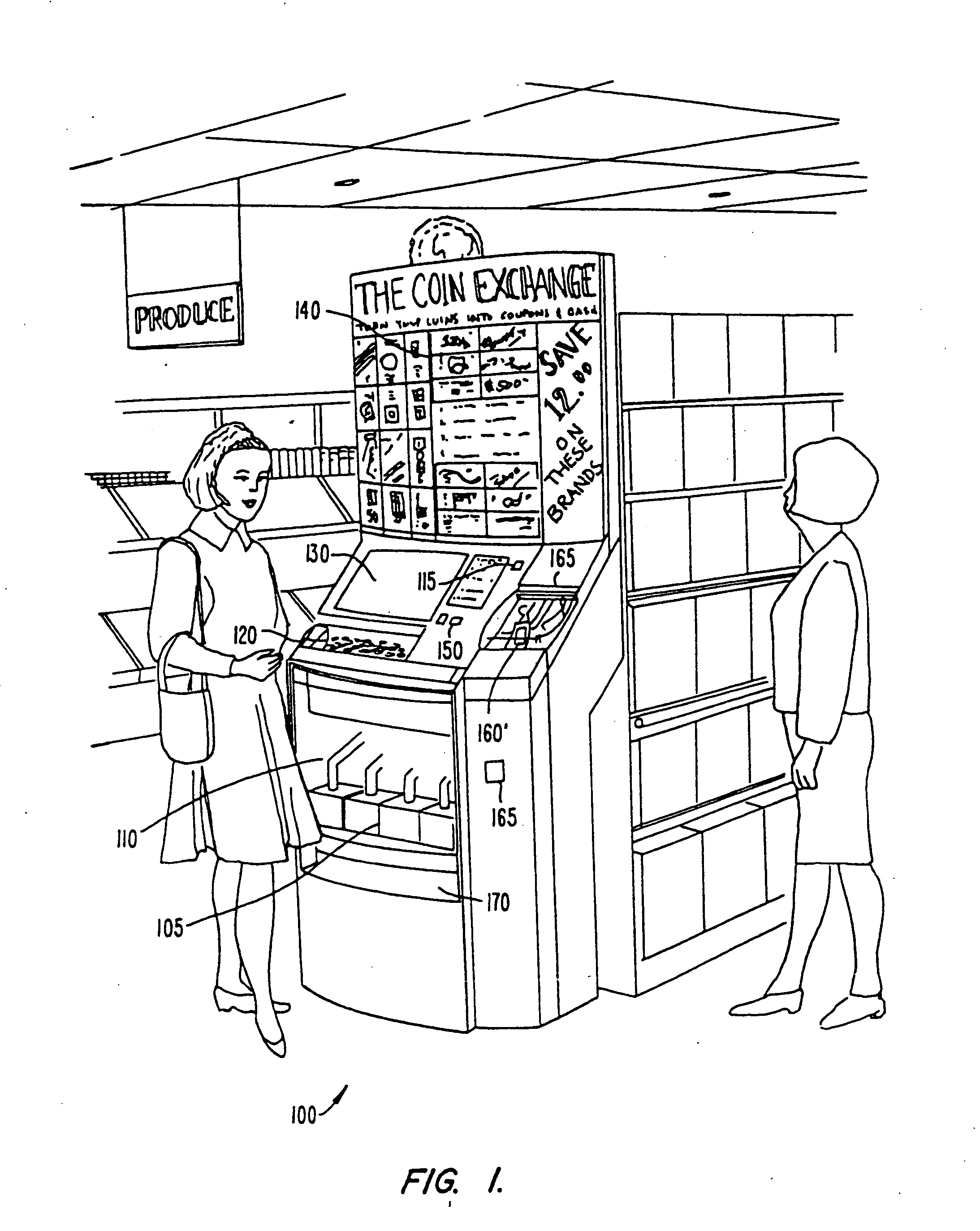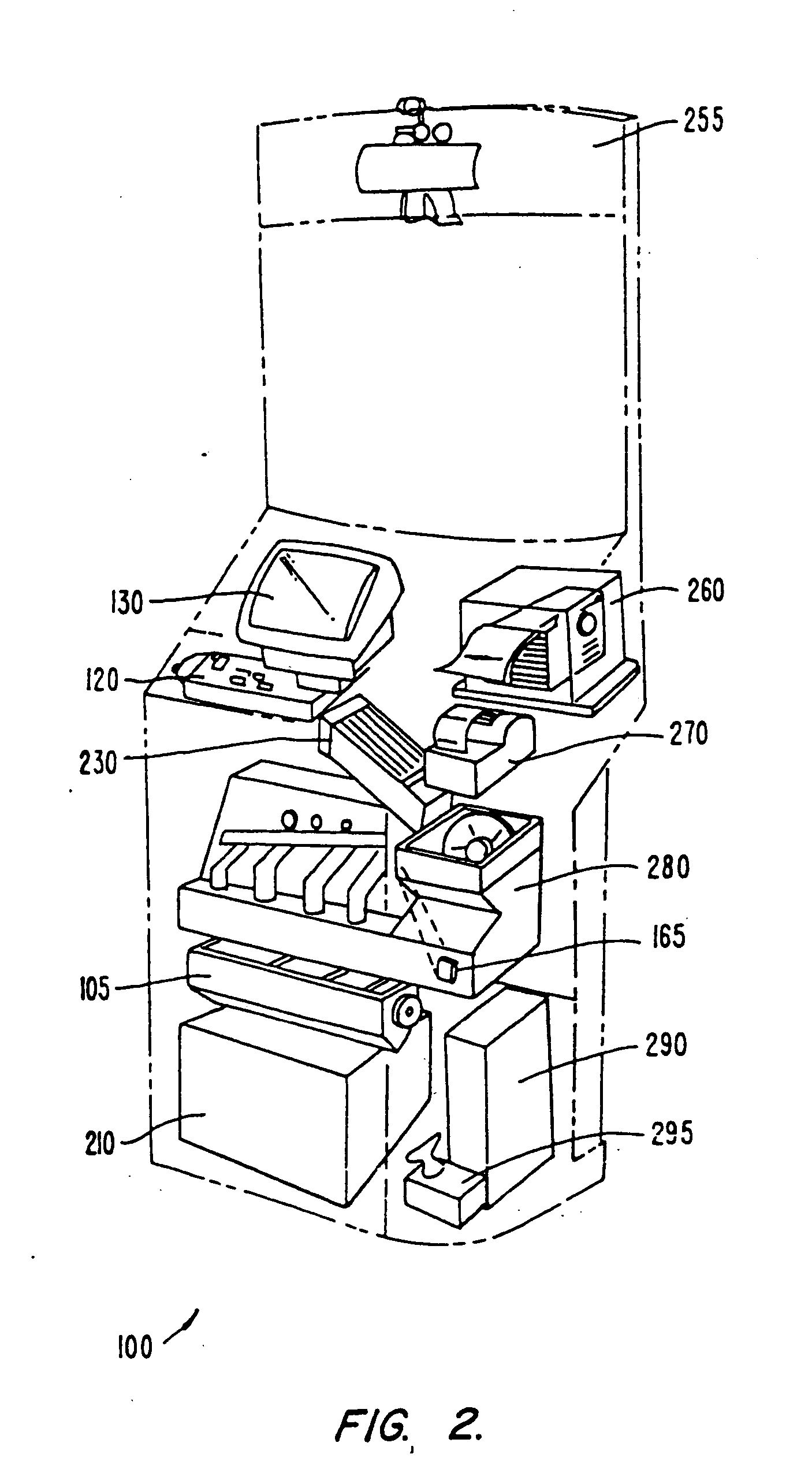Coin counter and voucher dispensing machine and method
a coin counter and voucher technology, applied in the direction of instruments, atm details, apparatus for dispensing discrete objects, etc., can solve the problems of large volume of coins, unpractical and cumbersome carrying, etc., to prevent or avoid jamming, prevent undesired surges in the flow of coins, and avoid possible damage to the machine
- Summary
- Abstract
- Description
- Claims
- Application Information
AI Technical Summary
Benefits of technology
Problems solved by technology
Method used
Image
Examples
Embodiment Construction
[0046]FIGS. 12-18 depict a coin counter / sorter and coupon / voucher dispensing device according to one embodiment of the invention. In the embodiment of FIG. 12, the device generally includes a coin counting / sorting portion 1202 and a coupon dispensing portion 1204. In one embodiment, these portions can operate independently in the sense that it is possible for the coin counting portion 1202 to be counting one customer's coins while the dispensing portion 1204 is dispensing coupons and / or vouchers to another customer. In the depicted embodiment, the coin counting portion 1202 includes an input tray or hopper 1206, a voucher dispensing slot 1208, a coin return slot 1210, a sorting / counting mechanism 1212, and customer I / O devices, including a keyboard 1214, additional keys 1215, a speaker 1216 and a video screen 1218. The coupon dispensing portion includes an activating device 1220 such as a button and coupon receptacle 1222. The apparatus 1200 can include various indicia, signs, displ...
PUM
 Login to View More
Login to View More Abstract
Description
Claims
Application Information
 Login to View More
Login to View More - R&D
- Intellectual Property
- Life Sciences
- Materials
- Tech Scout
- Unparalleled Data Quality
- Higher Quality Content
- 60% Fewer Hallucinations
Browse by: Latest US Patents, China's latest patents, Technical Efficacy Thesaurus, Application Domain, Technology Topic, Popular Technical Reports.
© 2025 PatSnap. All rights reserved.Legal|Privacy policy|Modern Slavery Act Transparency Statement|Sitemap|About US| Contact US: help@patsnap.com



